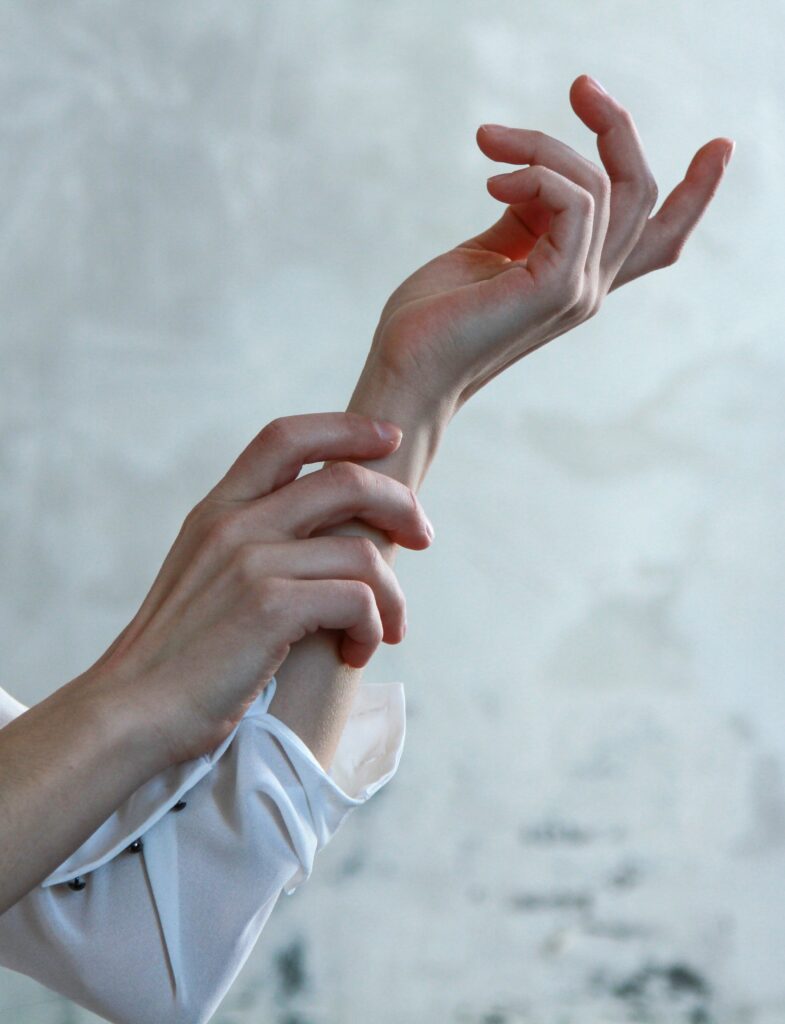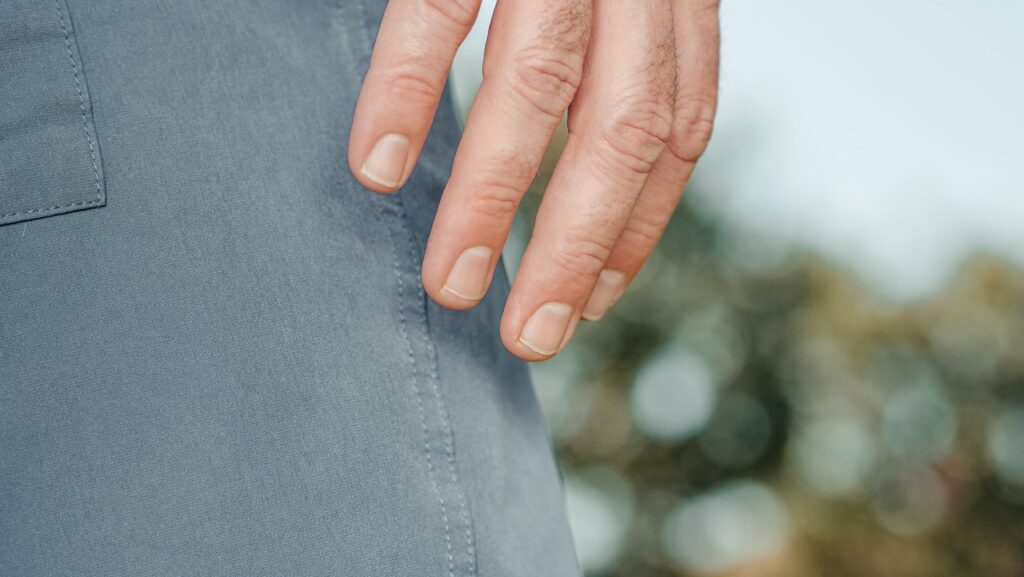Nail Problems
Did you know that nail problems can be a sign of a more serious underlying health condition?
While healthy nails should be smooth and a consistent colour, even the smallest change can indicate that all is not as it should be.
If you are worried about the appearance or condition of your nails, then the below guide to the most common nail problems can help you.
What are nail abnormalities
In a broad sense, nail abnormalities are any changes to the nails, such as the appearance of white spots, any discoloration, or the nail coming away from the nail bed.
As mentioned above, a healthy nail should be smooth with no ridges or lines and should be white as it comes away from the nail bed and then pink across the rest of the nail.
Nail abnormalities, or nail problems, can be caused by an infection, an injury, a medical condition, by taking certain medications, or due to an underlying condition.
If your nails have suddenly changed in appearance and you are concerned that this may be a sign of something more serious, then you should make an appointment with your doctor for an examination of your nails.
Some of the most common symptoms of a nail abnormality include:
- Discoloration. This could be in the form of white or dark streaks across the nail, a white spot on the outer nail, yellowing of the nails, or any other change to your usual nail colour.
- Change in shape. This includes any curling, curving, or clubbing of the fingernails or toenails.
- Change in thickness. Has your nail become significantly thicker or thinner recently?
- Change in texture. Is your nail dry, flaky, or brittle?
- Pitted nails.
- Bleeding, swelling, or pain around the nails
- A nail that is separating from the nail bed
- A bad odour
It is important that you do not ignore any of the above nail problems as they could be a sign of an infection or something more serious.

Who is most likely to experience nail problems
Nail problems can affect people of all ages. However, many of the most common nail problems such as an ingrown nail infection, dark thick toenails, and black fungal nail infection are more prevalent in people aged 50 and over.
Furthermore, people who regularly frequent public swimming pools and those who work in environments where their hands or feet are often in water are more likely to have untreated nail fungus.
It is worth noting that as you age, your fingernails and toenails will naturally change in appearance. You may notice your nails start to turn yellow, start to thicken and/or they may be more brittle and prone to breaking off.
This is completely normal and is usually not anything to worry about unless these changes are accompanied by further symptoms.
What are the 8 common nail disorders
1. Nail pitting
Nail pitting usually showcases itself as either shallow or deep holes in your nails. This can occur on both your fingernails and your toenails.
Most often, nail pitting is connected with nail psoriasis, but sometimes there are other causes of this condition.
If nail pitting is due to nail psoriasis, you may also notice the following symptoms:
- Changes to the normal shape of the nail
- A thickening of the nail
- Changes in the colour of the nail
- The nail coming away from the nail bed
In the most severe cases, nail psoriasis can cause the nail to crumble completely.
Nail pitting is most common in people aged 40 and over and is also more prevalent in those who have psoriatic arthritis.
If you do not have nail psoriasis, other possible causes of nail pitting sometimes include:
- A connective tissue disorder such as Reiter’s syndrome.
- An autoimmune disease such as alopecia or sarcoidosis.
- Incontinentia pigmenti, which is a genetic disorder that affects the hair, skin, nails, and teeth.
- Atopic or contact dermatitis.
2. Nail clubbing
Nail clubbing is one of the nail problems that often go unnoticed and undiagnosed. This is because the symptoms develop very slowly over time.
You can recognize nail clubbing by a downward curve to the nail, which feels soft when pressed. The tips of the nails are often swollen and may also be red in colour. The easiest way to describe the appearance of this condition is that the nails will look like upside-down spoons.
Nail clubbing can be a sign of a more serious condition, and you may also experience shortness of breath and/or coughing.
Nail clubbing is sometimes a symptom of lung cancer, although other lung conditions, congenital heart disease, endocrine problems, and gastrointestinal conditions can also cause this nail problem.
3. Beau’s lines
Beau’s lines are horizontal ridges that develop across the nails. You can develop more than one line on a single nail, or you can experience Beau’s lines on multiple nails.
There are several causes for Beau’s lines, including a nail infection, an injury, or as a result of certain illnesses.
- Acute kidney failure
- Mumps
- Thyroid disease
- Syphilis
- As a side effect of chemotherapy
- Melanoma
- Diabetes
You may also experience Beau’s lines if you have a zinc deficiency.
4. Nail separation
Nail separation, known in medical terms as onycholysis, is when your nail separates from the skin underneath it. One of the more common nail problems, onycholysis, has several possible causes, including injury to the nail, a fungal infection, or an allergy.
If you have onycholysis, you are likely to experience the below symptoms:
- The nail peeling upward from the nail bed
- Discoloration of the nail – yellow, green, purple, white, or grey depending on the cause
You shouldn’t feel any pain or discomfort. If your nail separation has occurred as the result of an injury, then no treatment is needed. You will simply have to wait for a new nail to grow through. If your nail separation is accompanied by other symptoms such as a yellowing and thickening of the nail, an unpleasant odour and/or a hardening of the skin surrounding the nail, you may have a fungal nail infection.
5. Discoloured nails
Another one of the more common nail problems is that your nails suddenly change colour, which can be a sign of an infection, an injury, or an underlying health condition.
Nail discolouration can affect both the fingernails and the toenails and typically involves the nail turning yellow, white, or green.
In more than 50% of cases, a discolouration of the nails is caused by a fungal infection. This is especially the case when the nail turns yellow or green. Alongside this, you may also notice that the nail has thickened, become curved, and/or started to separate from the nail bed.
If your nail appears red or purple in colour, this is most likely the result of an injury or trauma. In most cases, no treatment is needed, and you must simply wait for the injury to heal and the nail to regrow.
Chronic medical conditions such as diabetes, liver disease, and heart conditions can also cause discolouration of the nails.
Other causes of nail discoloration may include:
- A bacterial infection
- Candidiasis
- Malnutrition
- Yellow nail syndrome
- Staining from nail varnish or related products
6. Nail spooning
Nail spooning, known as koilonychia, is when the fingernails have raised ridges and scoop outwards much like a spoon.
In severe cases, the nail is so curved that it could hold a drop of water in it.
There are many possible causes of nail spooning, but the most common one is an iron deficiency.
You can identify spoon nails by the centre of the nail, which looks as though it has been spooned out. You may also notice that your nail becomes thin, cracked and the outer part of the nail may become separated from the nail bed.
Typically, spoon nails occur on the fingernails, but they can also develop on the toenails.
If your spoon nails are caused by an iron deficiency known as anaemia, you may also have the below symptoms:
- Fatigue
- Pale skin
- Feelings of weakness and lethargy
- Shortness of breath
Other possible causes of spoon nails include trauma, chemotherapy, frequent exposure to detergents or solvents, and an inability to absorb nutrients into the body. Spoon nails can also be hereditary.
You should be able to diagnose spoon nails yourself by their distinctive appearance, or you can visit your doctor for a professional diagnosis.
7. Nail streaks
Nail streaks, known as melanonychia, are a common nail condition that can affect both the fingernails and the toenails.
Typically, melanonychia displays itself as brown or black lines on your nails. It can be present on one nail or several.
If you are dark-skinned, these streaks may be a natural occurrence. However, they can also be a sign of a more serious condition, so they should always be investigated further.
The most common symptoms of melanonychia to look out for include:
- A black or brown vertical stripe down the length of the nail
- A black or brown horizontal stripe across the nail
- A deformity of the nail
There are many potential causes of melanonychia, including pregnancy, race, trauma, an infection, psoriasis, and, in rare cases, skin cancer.
Although the likelihood of nail streaks being a sign of cancer is low, you should always ask for an examination by your doctor to rule this out.
8. Yellow nail syndrome
Yellow nail syndrome is a rare condition that can affect both the fingernails and the toenails. This condition typically manifests itself as a gradual yellowing and thickening of the nails.
Sometimes, other symptoms you may experience include:
- The loss of the cuticle
- Curving of the nails
- Nails that stop growing
- Nails that separate from the nail bed
- Nail loss
Most people with yellow nail syndrome also experience problems with their lymphatic system. This can cause swelling in the lower parts of the body as well as respiratory problems.
Yellow nail syndrome can occur in people of all ages but is more common in those over 50.

How to treat your nail problems
How to treat nail pitting
If you notice nail pitting, make an appointment with your doctor so that you can get an official diagnosis.
In terms of treatment, getting rid of nail pitting can be tricky. Your doctor may recommend corticosteroid injections or taking a vitamin D3 supplement. However, both of these options have varied results.
You may also want to try scraping, filling, or polishing the affected nails to improve their appearance.
How to treat nail clubbing
Nail clubbing can be easily diagnosed by your doctor or another healthcare provider. The cause of the clubbing can then be identified with a series of tests, including a chest x-ray, CT scan, EKG, and blood test.
There is no specific treatment for nail clubbing. Instead, your doctor will look to treat the cause of the clubbing.
How to treat Beau’s lines
If you notice one or multiple Beau’s lines on your nails, you should make an appointment with your doctor to check for any underlying health conditions.
In terms of treatment, your doctor will look to treat the cause of your nail problems rather than the Beau’s lines themselves.
How to treat nail separation
Fortunately, these are easy to treat with an over-the-counter anti-fungal nail treatment such as Nailner Nail Fungus Treatment. You should start to see some improvement within 10-14 days, although it can take several months for the infection to completely clear up.
You can prevent nail separation by keeping your nails clean and well-maintained, choosing allergy-free manicure products, and keeping your feet dry.
How to treat discoloured nails
The best cure for a toenail infection is an over-the-counter anti-fungal treatment such as Nailner Nail Fungus Treatment, which is applied topically.
It is worth noting that untreated nail fungus will not go away on its own and is likely to worsen.
If you are worried about the discolouration of your nails and you have tried an anti-fungal treatment with no success, make an appointment with your doctor for a professional diagnosis.
How to treat nail spooning
If your spoon nails are a result of anaemia, then your doctor will subscribe you iron supplements and/or make recommendations for your diet.
If your spoon nails are the result of an underlying health condition, your doctor will aim to treat this rather than the nails themselves.
How to treat nail streaks
Treatment-wise, the type of treatment you require will be dependent on the cause of your melanonychia.
If you have a fungal infection, a simple anti-fungal treatment such as Nailner will clear up the infection and get rid of the streaks.
If your nail streaks are caused by trauma such as an injury or accident, then no treatment is needed. Your nails will simply heal over time.
For cases where a more serious health issue has caused your nail streaks, your doctor will be able to advise you on the best course of treatment.

How to care for your nails and prevent nail problems
If you want to avoid common nail problems such as nail streaks, painful nails, white spots on nails, cracked nails, nail fungus, discoloured nails, and yellow, brittle nails, then you need to be taking care of both your fingernails and toenails.
To prevent nail damage, follow our do’s and don’ts of nail care:
Do:
- Keep your nails dry and clean
- Practice good nail hygiene
- Moisturize your nails regularly
- Apply a protective layer of nail hardener before applying nail polish
- Wear protective footwear to public swimming pools and gyms
- Seek medical advice if you notice any nail problems
Don’t:
- Bite your fingernails
- Pick at your cuticles
- Pull of hangnails
- Use harsh nail care products
- Ignore nail problems

Frequently asked questions
What are the most common nail problems
The most common nail problems a person can experience include yellow nails, discoloured nails, Beau’s lines, nail spooning, nail streaks, nail pitting, nail separation, and nail clubbing.
What are the 5 most common nail problems
Of the most common nail problems, the five most common of them all are nail discoloration, ingrown nail infection, dark thick toenails, white flaky spots on nails, and black fungal nail infection.
Can fingernails show signs of illness
Yes, your fingernail abnormalities can be a sign of an underlying health concern or illness. Most commonly, fingernails that have changed colour, shape, or condition are a sign of a yeast or bacterial infection.
However, in some cases, nail problems can be a sign of something more serious such as diabetes, cancer, or heart disease.
How to tell if you have a fungal nail infection
The most common signs of a fungal nail infection include discoloration, brittle nails, thickening and yellowing of the nail, and painful nails. If left untreated, a fungal nail infection can cause the entire nail to break off from the nail bed and cause fungus under nail pain.
How to treat nail fungus quickly
The quickest way to treat nail fungus is with an anti-fungal nail treatment such as Nailner. This is an over-the-counter medication that can be applied topically to the affected area.
You do not need to visit your doctor if you have a fungal nail infection, as no prescription is necessary for this treatment.
Can I put nail polish on toenail fungus
Yes, you can apply nail polish to toenail fungus as long as you are treating the fungal infection with anti-fungal medication such as Nailner. If you are applying nail polish to cover up discoloured nails caused by the fungus, make sure that you apply a base coat first to protect your nails.
No products found